The Hindenburg cruiser project have their origin in the 1940’s, from a period in which Germany was planning to challenge Britain at sea.
Berlin was determined to be free of the restrictions of treaties and external limitations on ship design. In order to modernize the navy, a generalized Plan Z was developed and approved in 1939. It presupposed that war with Great Britain would begin not earlier than 1948, and the Kriegsmarine was planned to have 684 ships of various types by that time. However, several alternative variants of this plan were considered and rejected, including some less ambitious and costly, but with more realistic and promising results in a shorter term. The cruiser component of Plan Z consisted of 5 Admiral Hipper-class heavy cruisers and 12 Project P ironclads. The latter were the development of Deutschland-class “pocket battleships,” with a displacement of 25,500 tons, six 280-mm guns, and diesel power plants. It’s probable that this plan could have allowed for the evolution of the fascinating German cruisers of the 1930s, which had been designed under the restrictions of the Washington Naval Treaty.
German engineers had two possible paths ahead of them. The first was to further modernize the “pocket battleships,” which would later result in Projects D and E, and in turn led to the creation of P-class. The second was to develop a series of sophisticated heavy cruisers starting with the head ship Admiral Hipper and ending with its upgraded variant—Prinz Eugen.
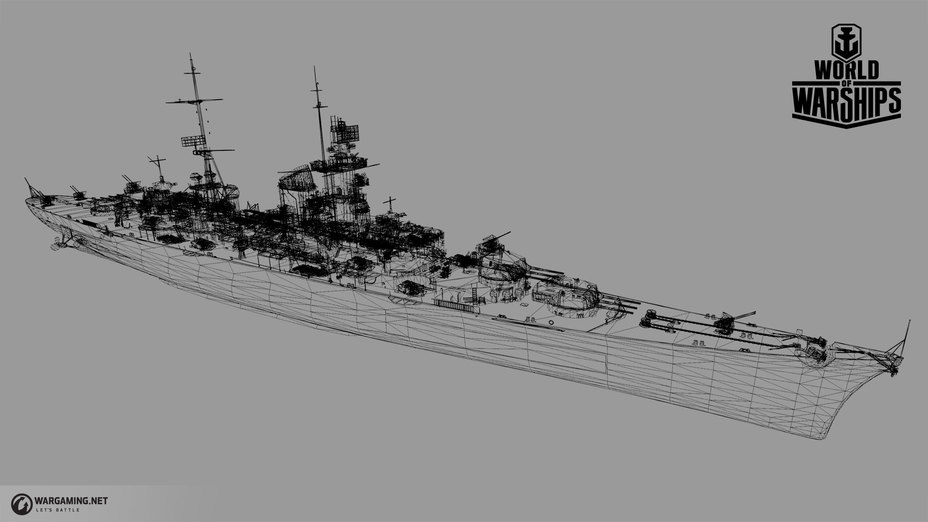
The last two classic heavy cruisers from the Admiral Hipper class in the time of the Washington treaty—Seydlitz and Lützow—were laid down in 1936-1937, each with a total displacement of 20,000 tons and eight 203-mm guns. They had quite a few shortcomings, but their layout, specifications, and equipment became the basis for the development of cruisers around the world. They managed to anticipate the main trends that would emerge, including more sophisticated fire control and high versatility. In 1938, these traits were real prerequisites for the continued construction of cruisers carrying 203-mm artillery. The Krupp Consortium developed the three-gun turret SK L/56 for the same guns SK C/34 used on Admiral Hipper-class ships.
The swiftly growing Kriegsmarine and its evolution highlighted the names of two significant Germans—Albrecht von Roon and Paul von Hindenburg.
Hindenburg was a heavy cruiser of qualitative reinforcement and an escort ship for H-class battleships. The main battery turrets had a classical layout: two turrets on the aft and two on the bow, one behind and slightly higher the other. An arrangement like this allowed the ship to use half of its primary armament both when advancing and retreating. The broadside weight of 8,052 kg unleashed by SK C/34 guns made it a deadly enemy for cruisers that were built in the time of the Washington treaty. The guns were arranged in four turrets of three guns each, just like on Roon, which guaranteed Hindenburg the advantage over any class of heavy cruisers of that time, including the Buffalo project and Project 82 (1943) ships.
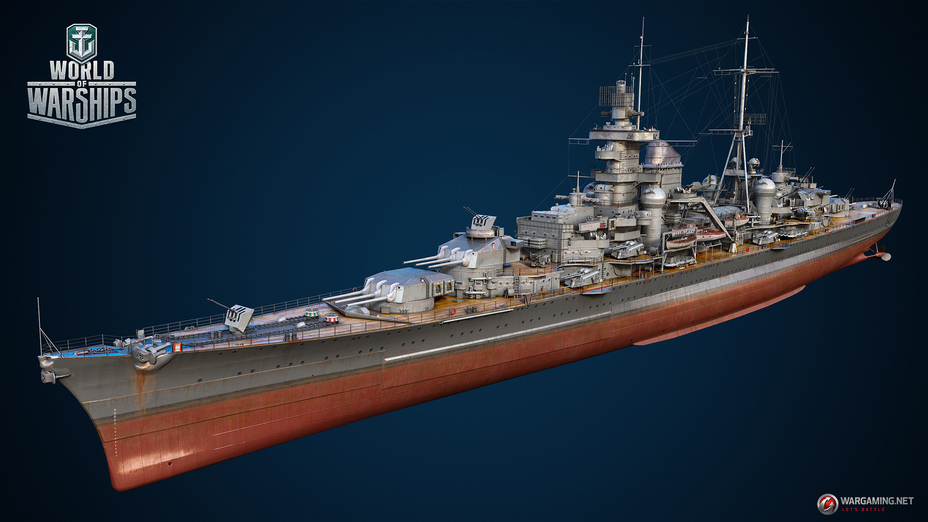
Raiding was the secondary mission of the ship, for this reason Hindenburg kept reinforced torpedo armament—with four quadruple launchers installed on the upper deck, complemented by a decent stock of torpedoes. The cruiser was well equipped with dual-purpose artillery—carrying eight Dop.L. C/37 mounts with sixteen 105-mm SK C/33 guns.
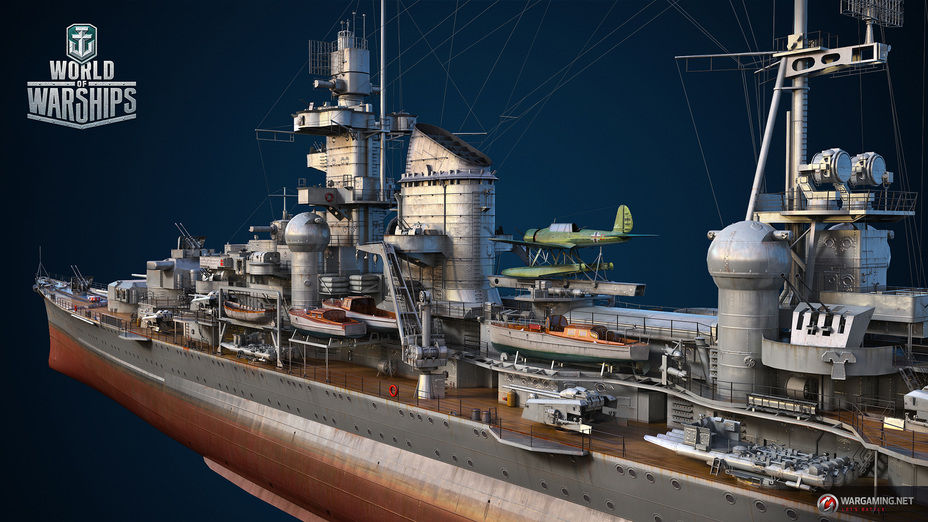
As any capital ship, Hindenburg had quite a powerful antiaircraft defense capability and, in addition to eight dual-purpose mounts, was equipped with the brand new AA system 55-mm L/77 Gerät 58. The ship carried seven coaxial 55-mm L/77 Gerät 58 Zwilling mounts and two single 55-mm L/77 Gerät 58 mounts. Unfortunately, Germans didn’t manage to develop a system of centralized target acquisition for these guns, and despite great ballistic characteristics, the fire efficiency was lower than expected. The mount was aimed and tracked targets with the help of two optical sights, one for training and the other for elevation. Shell traces were used to assist with adjusting fire. The rest of the small-caliber AA artillery included four coaxial 20-mm Flakzwilling 38 autocannons and nine quadruple Flakvierling 38 autocannons. Small-caliber mounts didn’t have central fire control—German antiaircraft gunners preferred to fire at multiple targets simultaneously, which is why it was battery commanders responsible for fire control. Hindenburg had the same aviation armament as Prinz Eugen—three Arado 196 floatplanes. Two were stored in a hangar with a sliding roof, while the third one stood combat-ready on the catapult under a cover.
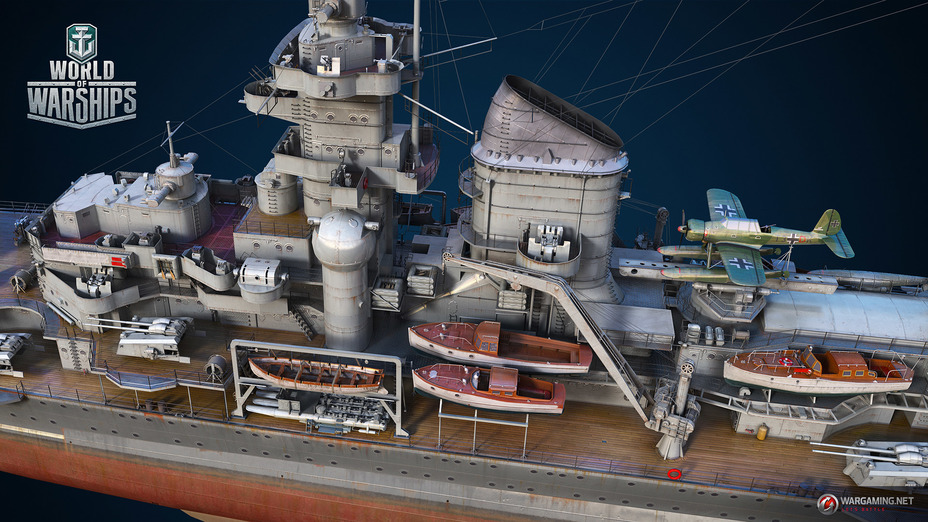
What about radar equipment? FuMO 26 radar was installed in a dedicated room above the main command and rangefinder post (CRP). The antenna for the FuMO 25 surveillance radar was placed at the mainmast top, while the aft CRP housed the FuMO 27 radar. The bow CRP on the conning tower’s roof didn’t have a radar. Four FuMB-4 Samos dipole antennas were installed on the bow superstructure.
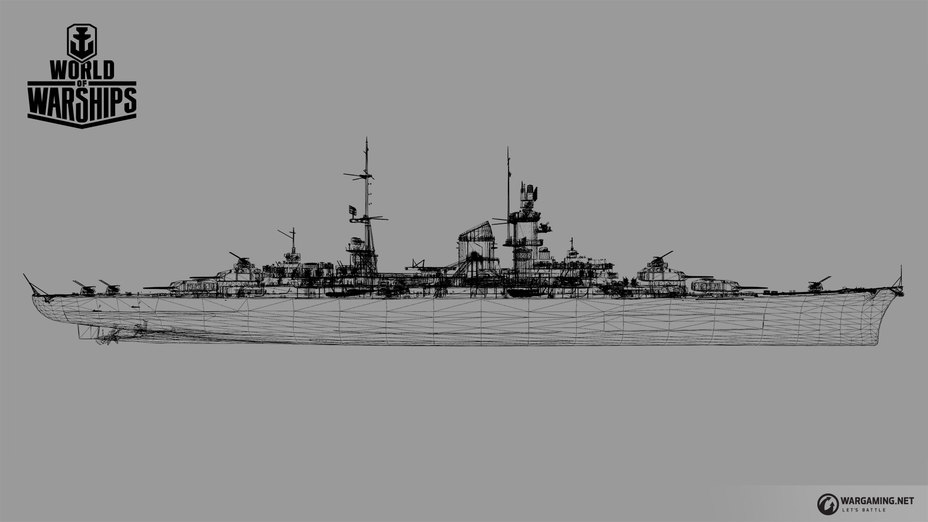
In terms of its dimensions, Hindenburg resembled a battleship: length—228.9 meters, beam—24 meters, waterline draft—7 meters. The ship’s total displacement was 22,324 tons. The output of the steam power plant was at 155,000 hp, the same as on cruiser Roon, with a designated speed of 31.6 knots. To escort H-class battleships, Hindenburg’s cruising range was significantly increased to 5,500 miles at 18 knots, but it didn’t solve the issue of black oil and it also made it more difficult to supply a squadron equipped with both steam turbines and internal combustion power plants.
In terms of armor the cruiser looked more impressive than its prototype Prinz Eugen. Its armor belt consisted of three sections of different height and thickness. Typical of German shipbuilding, the cruiser had an anti-ice/shrapnel armor belt with a thickness varying from 27 mm to 40 mm on its bow. It grew thicker towards the bow armor beam of the citadel in order to cover its sides. The beam itself had a thickness of 110 mm and had another internal 40-mm bulkhead running from the main armor deck to the upper deck.
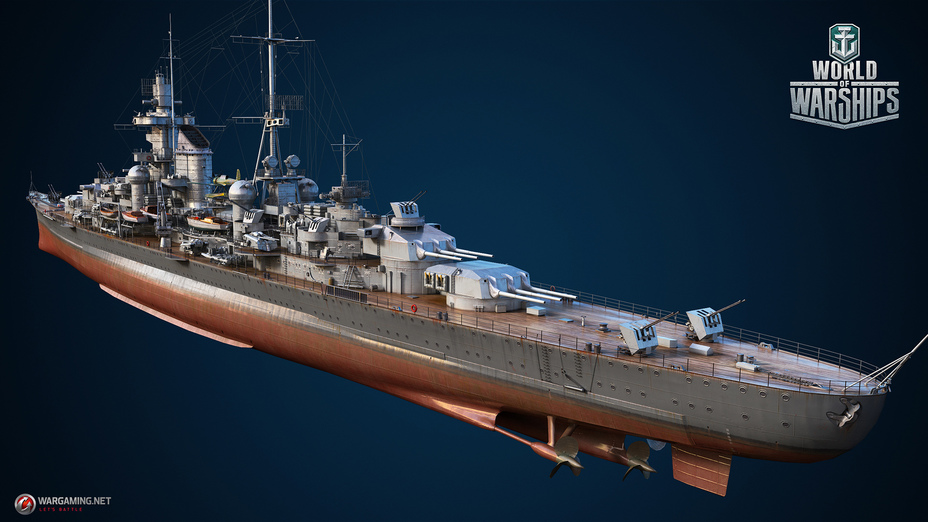
The side belt near the primary armament turrets was made of 110 mm thick cement armor. A belt with a thickness of 100 mm stretched further towards the aft, covering the main power plant. Aft magazines for the main battery turrets were protected with an armor belt 110 mm thick, while another 90-mm belt stretched from the aft armor beam, which was 90 mm thick, covering vital rudder gear and all associated compartments. The hull's plating over the citadel was made of 30-mm homogenous armor and formed a spacious casemate together with 40-mm bow and aft bulkheads. The barbettes of the main battery turrets didn't have differentiated armor, instead, their armor had a thickness of 110 mm all around.
The horizontal armor consisted of 30 mm homogenous plate on the upper deck, covering the ship from the bow to the aft main battery turrets, on the outside of superstructures. The design features of the main armor deck were typical of German shipbuilding—with an armor slope joining the lower part of the armor belt. The slope's thickness was 60 mm near the main battery magazines and 45 mm near the main power plant. A single antitorpedo bulkhead had a thickness of 20 mm. In general, the quality and depth of anti-torpedo protection left much to be desired for a ship of this size.
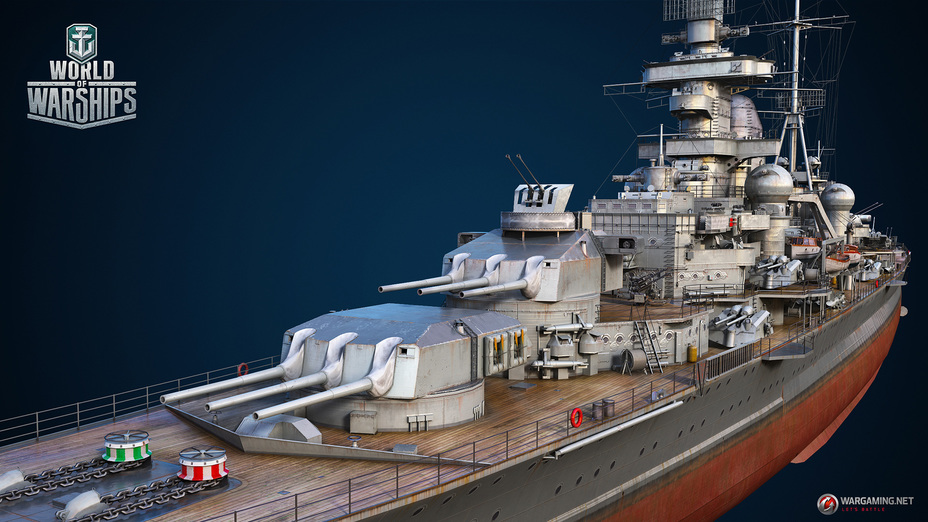
The exterior and location of main battery and dual-purpose artillery, as well as general architectural and layout solutions, give this ship away as a significantly enlarged version of cruiser Prinz Eugen. However, it's quite in line with the principles of German shipbuilding. For example, the silhouette of cruiser Prinz Eugen resembles that of battleship Bismarck from afar. This was done on purpose, with the intention of confusing the enemy whilst using solutions tested and adopted by the industry, thus decreasing the cost of constructing new ships and making it easier for the crew to master operation of the warship.
The combat capabilities of Hindenburg at the moment of its design, made it without doubt the most powerful among all of the heavy cruisers that Germany's potential adversaries were designing at that time. However, during World War II new types of big cruisers appeared: American Alaska, Japanese B-65, and Soviet Project 69 Kronstadt, laid down before the war to oppose enemy heavy cruisers armed with 203-mm artillery. Hindenburg wouldn't have much chance of victory against these ships.






